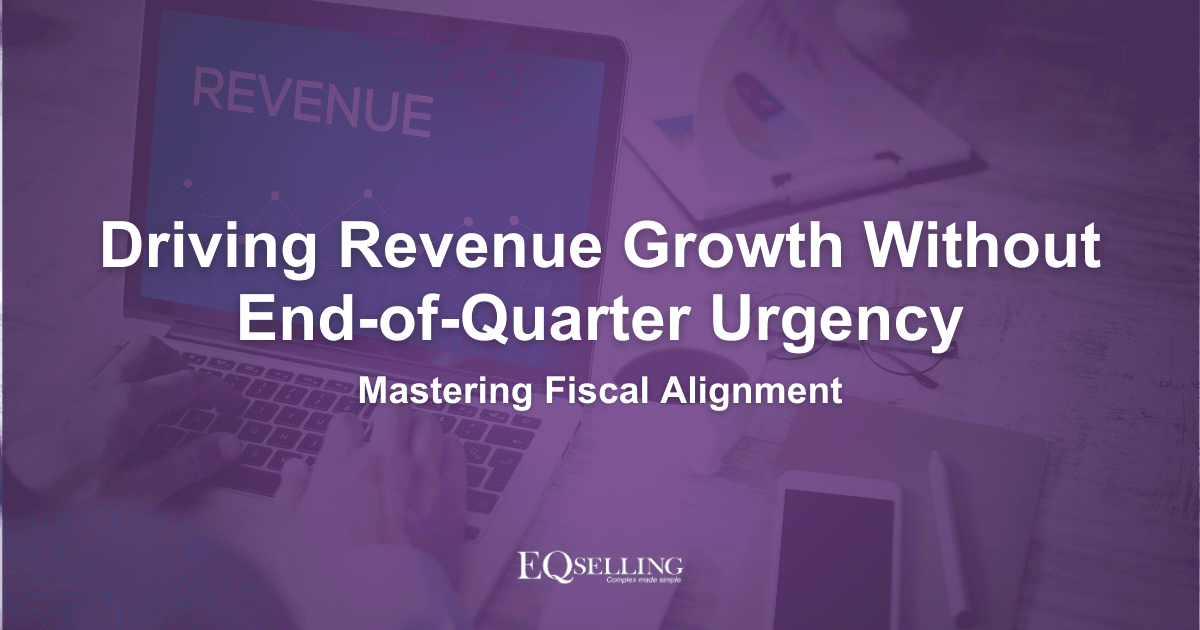4 Steps to Mastering Stakeholder Relationships in Partnerships
In the competitive landscape of partnerships, the quality of your stakeholder relationships can be the deciding factor between success and mediocrity. Many partner managers wish for stronger, more effective relationships with their partners, but few take the necessary steps to turn those wishes into reality.
At EQ Selling, we understand that improving stakeholder relationships requires a disciplined approach: analyzing your current situation, clearly defining your desired state, and executing specific actions to bridge the gap. Let’s explore the difference between wishing for better stakeholder relationships and actively making them better, providing actionable strategies to drive continuous improvement in your partnerships.
Wishing Isn’t a Strategy. Action Is.
Let’s be honest. Most of us have silently wished we had more influence over our partnership stakeholders.
Wishing for better stakeholder relationships is easy; it’s the action that’s hard. Without a structured plan, wishes remain just that—wishes. Effective partnership management demands that you identify the key players, understand their roles, and assess the health of your current relationships. Only then can you develop a targeted strategy to improve them.
4 Steps That Shift Your Stakeholder Relationships from Stalled to Strategic
Step 1: Identify Key Partnership Players
Start by mapping your current stakeholder environment. Do you have clear coverage across all partnership levels, strategic, tactical, and execution? Are there key players you should know but don’t? Are you clear on what partnership role each stakeholder plays?
Identify:
-
- Gaps in coverage
-
- Partnership role assignments, gaps, and risks
-
- Outside influencers (consultants, advisors, internal politics)
This is the diagnostic stage. Without it, you’re flying blind.
Step 2: Analyze the Current State of Each Stakeholder Relationship
To move from wishing for better stakeholder relationships to actively improving them, you must first understand where you stand with each stakeholder. This step is about analyzing the current state of your relationship with a given stakeholder, focusing on what you know about them, their role, their motivations, and the level of access and trust you currently have.
For each identified stakeholder, gather detailed information about:
-
- Responsibilities, title, and organizational placement: Start with the basics. Their name, title, and responsibilities within the partner organization. For example, knowing that “Lisa” is involved in investment decisions but not knowing her title or last name indicates a gap in your understanding.
-
- Their partnership role: Clarify how they contribute to the partnership. Are they a strategic-level executive sponsor setting the long-term vision, a tactical-level leader allocating resources, or an initiative-level executor driving go-to-market activities? Understanding their specific role helps you tailor your approach.
-
- Their motivations: Dig deeper into what drives them. This includes:
-
- How they are measured and rewarded in their role
-
- Their organizational or career aspirations
-
- Their personal life goals and aspirations outside of work
-
- Level of access: Assess how easy it is to communicate with them. Do they respond promptly to emails or calls? Can you have impromptu discussions, or is scheduling a meeting a challenge? Limited access reduces your ability to influence key stakeholders.
-
- Level of trust: How much do they trust you? Evaluate their trust using David Maister’s formula: Trust = (Credibility + Reliability + Intimacy) / Self-Orientation.
This analysis reveals strengths to leverage and weaknesses to address, such as unknown stakeholders, limited access, or low trust levels. Without this step, you’re navigating stakeholder relationships blindfolded, unable to identify risks or opportunities for improvement.
Step 3: Define the Desired State of Each Stakeholder Relationship
With a clear picture of the current state, it’s time to envision what each stakeholder relationship should ideally look like as a reasonable next step. This involves setting specific, measurable goals for trust, access, and a deeper understanding of their role and motivations. A well-defined desired state provides a roadmap for building stronger, more impactful relationships that drive partnership success.
For each stakeholder, define your desired:
-
- Level of trust
-
- Level of access
-
- Understanding of their role, responsibilities, and organizational placement
-
- Insight into their motivations
Defining these desired states transforms vague aspirations into concrete targets. For example, instead of hoping for a better relationship with a finance stakeholder, you might set a goal to increase trust by focusing on their budget priorities, achieve same-day email responses, and confirm their role in resource allocation decisions. This roadmap makes it easier to track progress and measure success.
Step 4: Develop an Action Plan
With a clear understanding of the current state of your stakeholder relationships and a well-defined vision of what those relationships should look like, you’re ready to create a targeted action plan.
This plan bridges the gaps and mitigates the risks identified, ensuring each stakeholder relationship moves steadily toward its desired state, driving measurable improvements in partnership effectiveness.
-
- Fill Gaps: Assign team members to cover stakeholders who are currently unassigned. For example, if no one engages with a key finance stakeholder, designate someone to build that relationship.
-
- Build Trust: Reduce self-orientation in conversations by focusing on the partner’s objectives and goals. This aligns with Maister’s trust equation, where lower self-orientation exponentially increases trust.
-
- Understand Motivators: Dig deeper into business, organizational, and personal motivators. Understanding these requires trust and careful observation.
-
- Mitigate Risks: Develop strategies to address identified risks, such as improving access to key stakeholders or building influence with decision-makers.
This action plan transforms vague wishes into concrete steps, ensuring that your stakeholder relationships improve over time.
Make the Shift from Hope to Habit
You can wish for stronger stakeholder relationships, or you can engineer them.
It starts with an honest analysis, a clear destination, and focused action rooted in empathy and strategy. Every conversation, every connection, every stakeholder touchpoint becomes a step toward partnership excellence.
Improving stakeholder relationships isn’t about luck or wishful thinking; it’s about discipline and execution. At EQ Selling, we provide the tools and training to help you navigate this process effectively, ensuring that your partnerships thrive and contribute to your overall sales performance improvement.
So, here’s your challenge:
Are you waiting for stakeholders to change?
Or are you changing the way you work with stakeholders?
For more insights and to access our free video training, visit EQ Selling’s partner management training. Take the first step today toward turning your stakeholder relationship wishes into measurable, impactful results.



